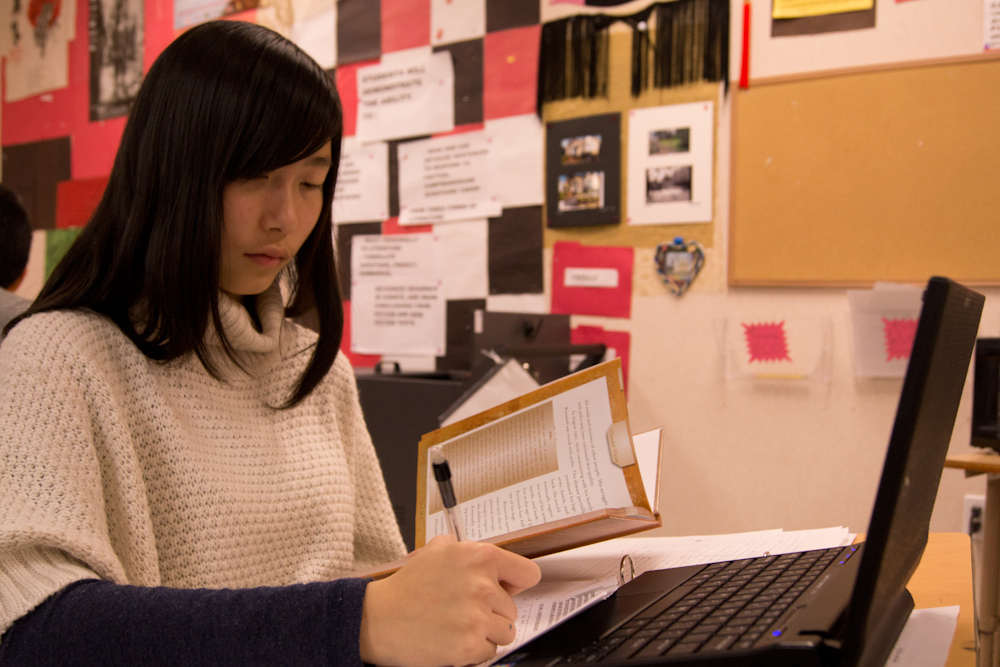

“They’re always in here. They speak freely, because they know they can tell me anything,” says Whitehurst, the English Language Development teacher. Ask Whitehurst about any one of her students, and she will be able to describe each of them with vivid stories and jokes.
The English Language Development program (ELD), serves to help non-native English speakers gain a better understanding of English and is usually taken in conjunction with CP English courses. “Students have to pass a district test to show they have at least an intermediate level of English to even get in the Aragon program. That means they have to be able to write an essay, do reading comprehension, and read at least a fourth grade reading level,” says Whitehurst. “Otherwise, they have to go to Hillsdale to take the basic course to get in.”
“I use what we call ‘front-loading’ to help these students learn the basic cultural language,” she says. Whitehurst teaches these students the cultural essentials they lack by packing many examples and explanations of the usage in her classes. “For example,” Whitehurst explains, “you might know when to use ‘I have done,’ ‘I had done,’ ‘I will have done,’ and so on, but do you know why? Most native speakers don’t know the reasons why, but they still know when to use it.” She adds, “Otherwise, it’s mostly structure, putting things together, which is hardest for students with native languages without firm tenses.”
“It really made it easier because I was learning more vocabulary and grammar, doing lots of reading, and practicing speaking more,” says sophomore Simon Cot. “Before, I didn’t want to speak at all because of my accent.” Cot knew no English prior to emigrating from France with his family ten months ago and initially attended Hillsdale for beginner classes.
The students come from diverse backgrounds—Spanish, Chinese, French, and Farsi are just some examples of the variation of native languages of students in the ELD program. “It’s not a problem at all,” Whitehurst says, “They are at least at intermediate level, and during class, most of the time they know the answers. They just have to say it, which many of them don’t do. They speak most freely in this class. They all trust each other.”
Freshmen Hossein Taghavi, a native from Iran, attests to this. He says, “In America, people really see the value of good students, and if you become good at something, they help push your forward.”
“Most of the time, the class atmosphere is friendly, relaxed, and intensely connected. The students are earnest but also boisterous,” says Whitehurst.
One of the most challenging obstacles is the move itself—the new environment, language, people, cultures, and rules. Sophomore Nicole Vasquez remembers when she moved to the United States from Peru two years ago, saying, “I was really afraid and scared at first.” Vazquez explains how she transitioned to the Aragon environment. “It started with debate [in Whitehurst’s] class. I didn’t talk the first time, but after that, I fell in love with it.” With a fervent passion for debate, Vasquez hopes to become a lawyer to pursue her interest.
With a truly diverse group of students, the ELD program encompasses a wide variety of students who have come from all over the world. Whitehurst is proud of her students’ work ethic. “In general, students who have been here for two to three years work harder. Some do better than a lot of native students… Many students end up going to CSM, but we’ve had a couple UC bound students,” she adds. For these students, the ELD program is not only a foundation for education in America, but also a platform for future education.




